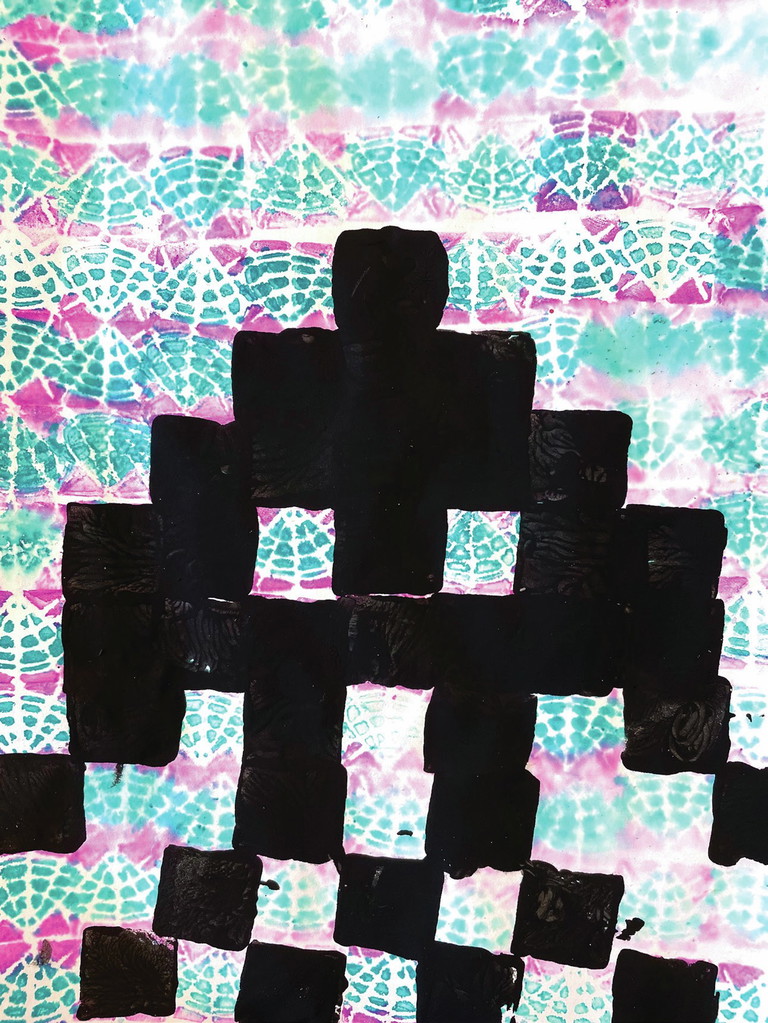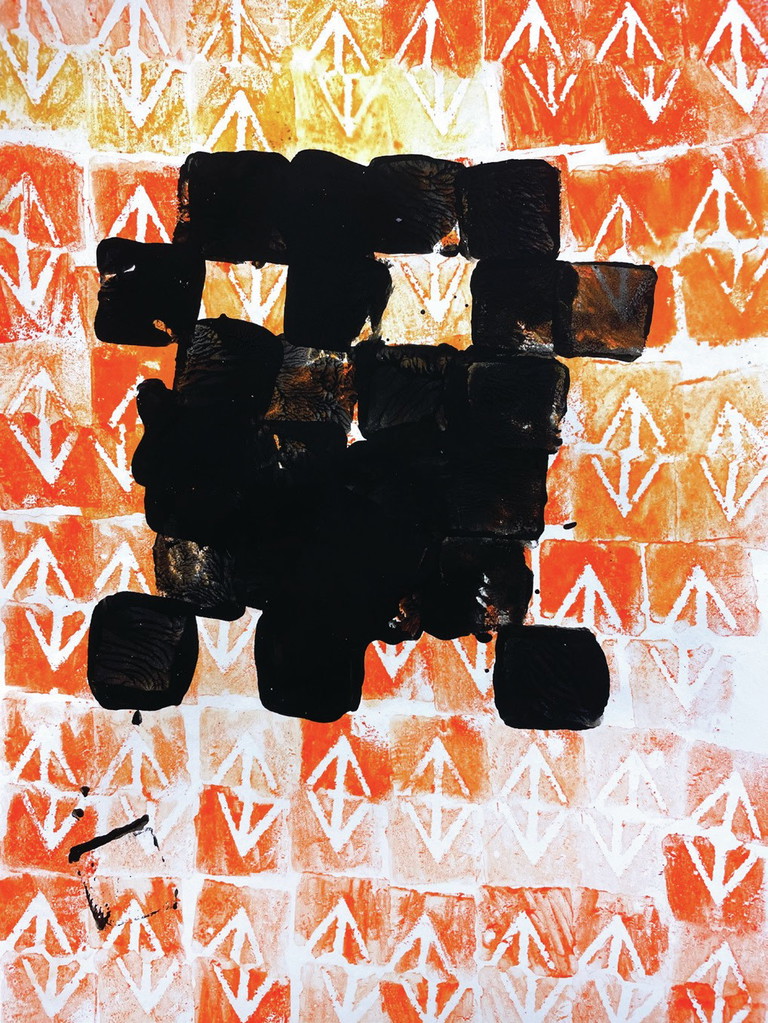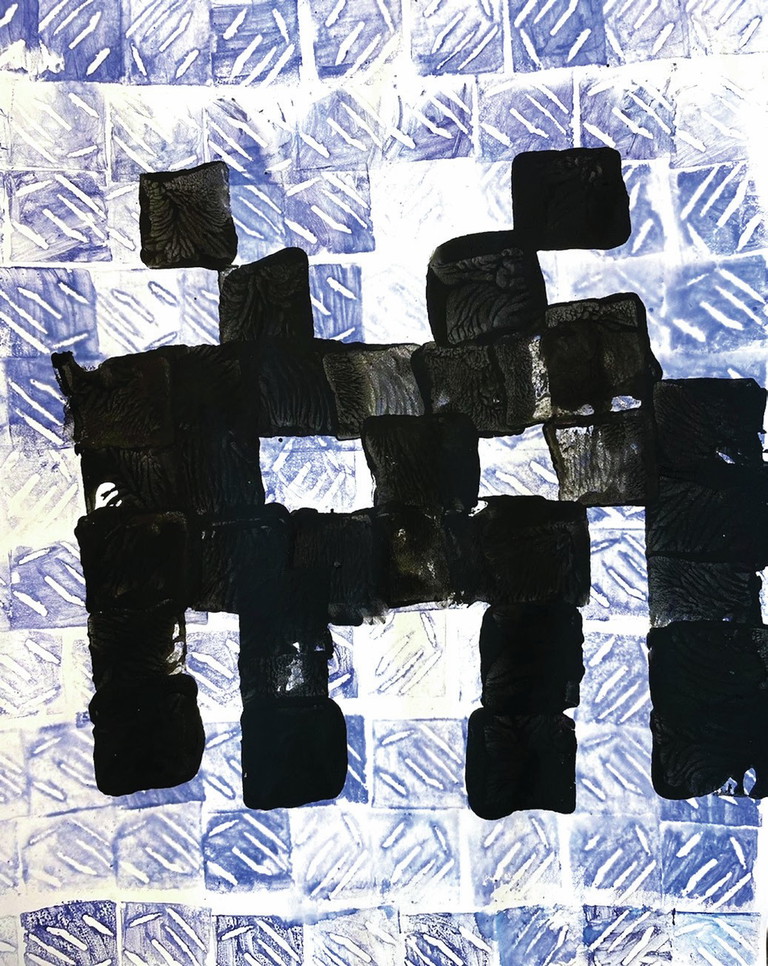ELEMENTARY

Abbie.
Sara Ingraffia
Printmaking seems like a magical art form to elementary students. They watch with fascination as they pull back their stamp to see a design transferred to paper. In this project, fourth-grade students make their own stamp, use it to create a patterned background, and then use the stamp again to create a print with a space invader as the subject. This project requires lots of repetition, pattern, and planning.
Designing the Stamp
We start with the gum eraser that will be turned into a stamp to create our patterned background. I tell students, “The simpler the design, the better. Think lines or shapes—nothing too complex.” Working on a 1" (2.5 cm) square surface challenges students to keep it minimal. Students draw over their design with a pencil until they have created scored lines on their eraser. Remind students, “We are simply putting our design on the eraser. Take your time and enjoy the process.”

Nolan.
Patterned Backgrounds
Once they have transferred the design to the eraser, students use two washable markers to color over it. I place a damp sponge paintbrush in a bowl at each table so they can dampen their paper. Students gently brush from the top of their papers down about 3" (7.5 cm) all the way across before pressing their stamp on the damp paper.
Students can stamp two or three times before they need to reapply their colors. Itʼs a very repetitive process, and they should expect a few of their stamps to be imperfect, which makes it even more fun!
Itʼs fascinating to discuss studentsʼ perspectives on street art and how they may perceive it differently the next time they explore new places.
Explain that this is the printmaking process, and that the tiled look of the stamping requires each print to work together as a team to create a pattern. It is the image as a whole that is important. Providing a practice sheet or scrap paper at each table is also a good idea.
Depending on how elaborate you want your studentsʼ work to get, you could have them turn the stamp a different way for each row or each time they stamp.
Inspiration from Street Artist Invader
The stamped backgrounds turned out great, now itʼs time to decide what to put on top of them. I love teaching students about street artist Invader. Invader’s identity is unknown, but his artwork is featured around the world as a part of a large-scale project called Space Invaders, which has been ongoing since 1998. Share with students the Space Invaders interactive website (see Resource). Select different countries and cities from a world map and try to find where the space invader has been installed.

Preston.
Our Own Space Invaders
While looking at the various space invaders, we discussed how many show symmetry and how they are made up of straight lines without a curve to be seen. Students can use the flat side of their stamp erasers and black tempera paint to create their own space invaders on their tiled backgrounds. I find that putting black tempera paint on a paper plate works best for students.
Discussing and Displaying
Once these projects are complete, displaying them can be fun, too. You could follow Invader’s lead and put them in different spots around the classroom or school. My classes inevitably have a discussion about what street art is and how it can be viewed in different ways.
Through his art, Invader brings people together. His popularity has grown, and his artwork is now in high demand. Itʼs fascinating to discuss studentsʼ perspectives on street art and how they may perceive it differently the next time they explore new places.
NATIONAL STANDARD
Connecting: Relating artistic ideas and work with personal meaning and external context.
RESOURCE
Sara Ingraffia is an art teacher at Currey Ingram Academy in Nashville, Tennessee, a private school that serves students with learning differences. sara.ingraffia@curreyingram.org
Stamped Space Invaders